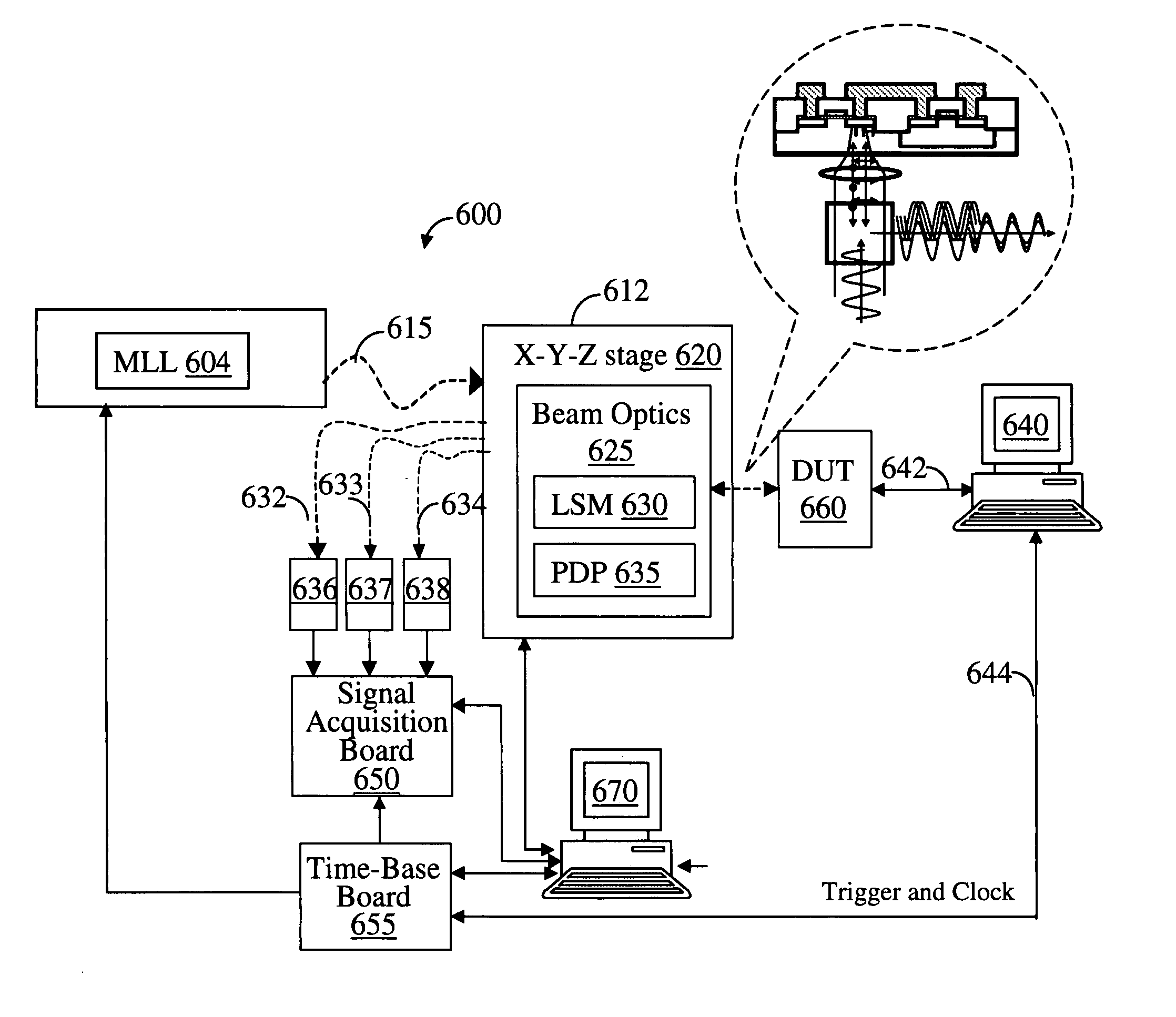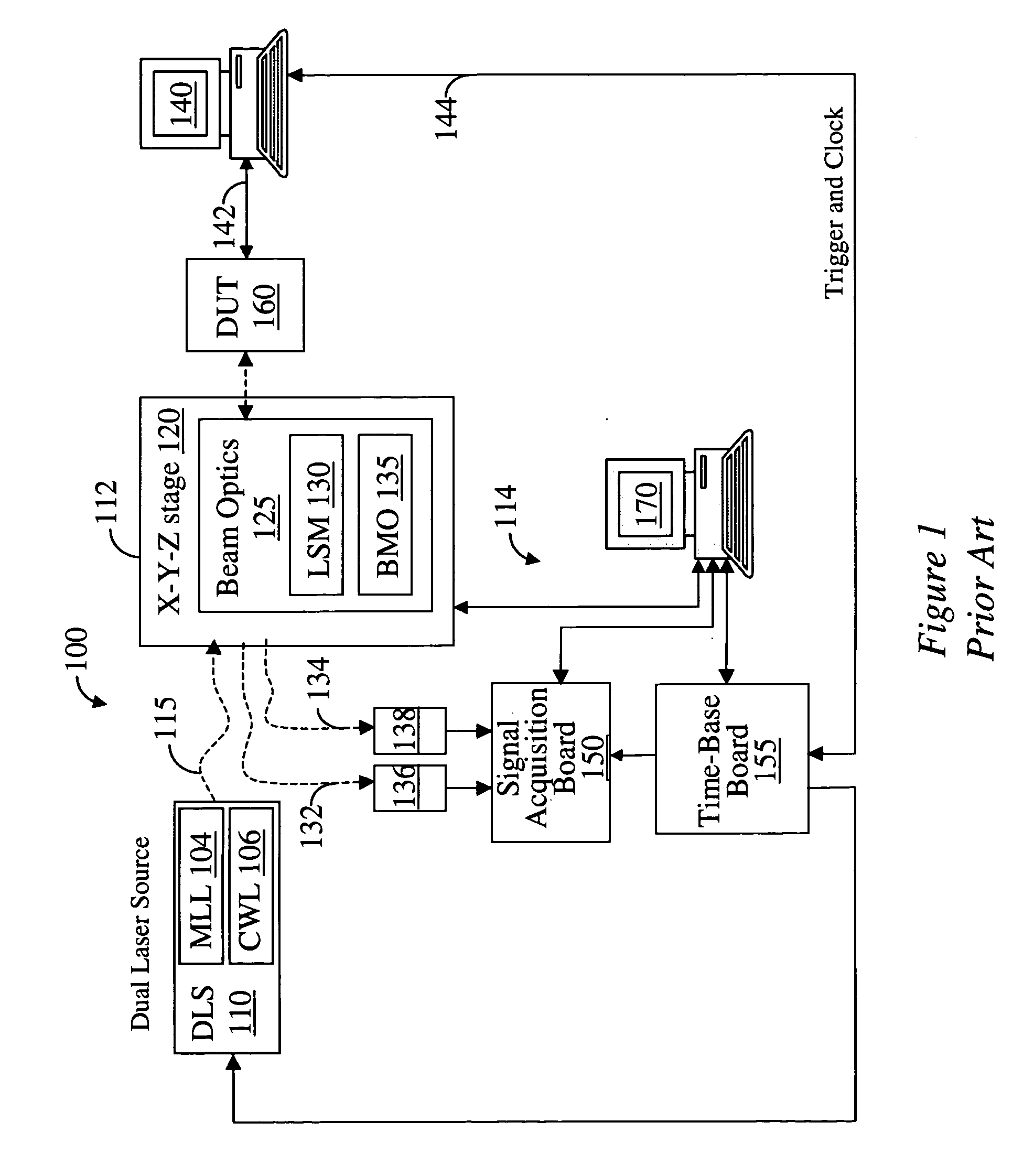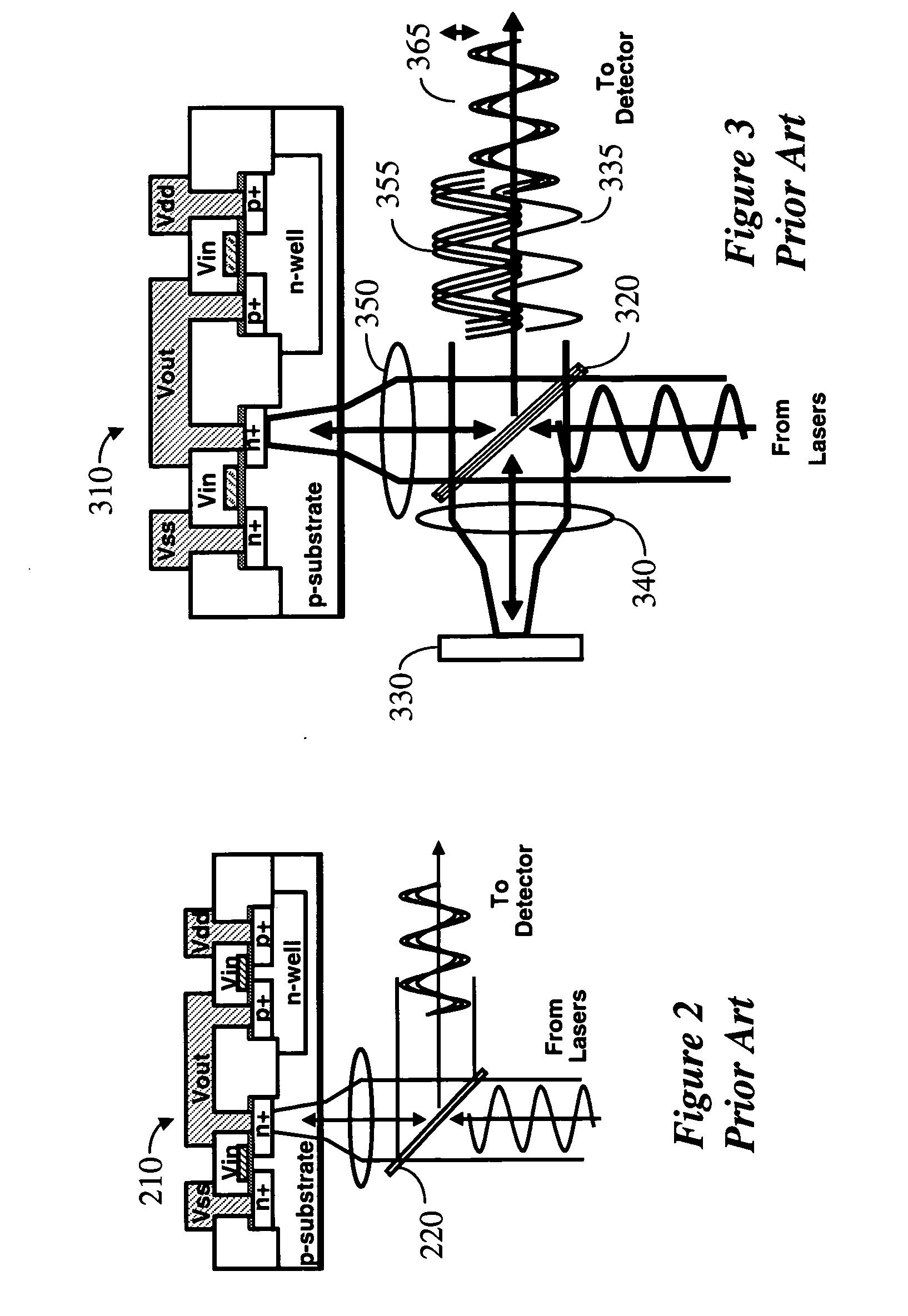Laser probing system for integrated circuits
a laser-based probe and integrated circuit technology, applied in the direction of optical radiation measurement, instruments, light polarisation measurement, etc., can solve the problems of low signal strength, low signal strength, and noise introduced into the signal by the dut's vibration, and achieve high temporal resolution
- Summary
- Abstract
- Description
- Claims
- Application Information
AI Technical Summary
Benefits of technology
Problems solved by technology
Method used
Image
Examples
Embodiment Construction
[0051] An embodiment of the invention will now be described in details with reference to FIG. 6 and, for illustration purposes, it will be depicted in a manner highlighting differences from the system of FIG. 1. Most notably, in this embodiment of the invention a polarization differential probing optics, PDP 635, is used to generate two beams of orthogonal polarization orientation and point both beams at the same location on the DUT. Other differences would become apparent from the description provided below.
[0052] In FIG. 6 a mode-locked laser source, MLL 604, provides pulsed laser beam. The pulses are of very short duration, e.g., 10 ps. The wavelength can be an ‘invasive’ wavelength such as 1064 nm, or it may be a non-invasive wavelength (>1100 nm). By ‘invasive’ it is meant that the laser illumination interacts, i.e., generates significant numbers of electron-hole pair, with or causes significant changes in the electrical response of the DUT. In some embodiments the laser sourc...
PUM
 Login to View More
Login to View More Abstract
Description
Claims
Application Information
 Login to View More
Login to View More - R&D
- Intellectual Property
- Life Sciences
- Materials
- Tech Scout
- Unparalleled Data Quality
- Higher Quality Content
- 60% Fewer Hallucinations
Browse by: Latest US Patents, China's latest patents, Technical Efficacy Thesaurus, Application Domain, Technology Topic, Popular Technical Reports.
© 2025 PatSnap. All rights reserved.Legal|Privacy policy|Modern Slavery Act Transparency Statement|Sitemap|About US| Contact US: help@patsnap.com



